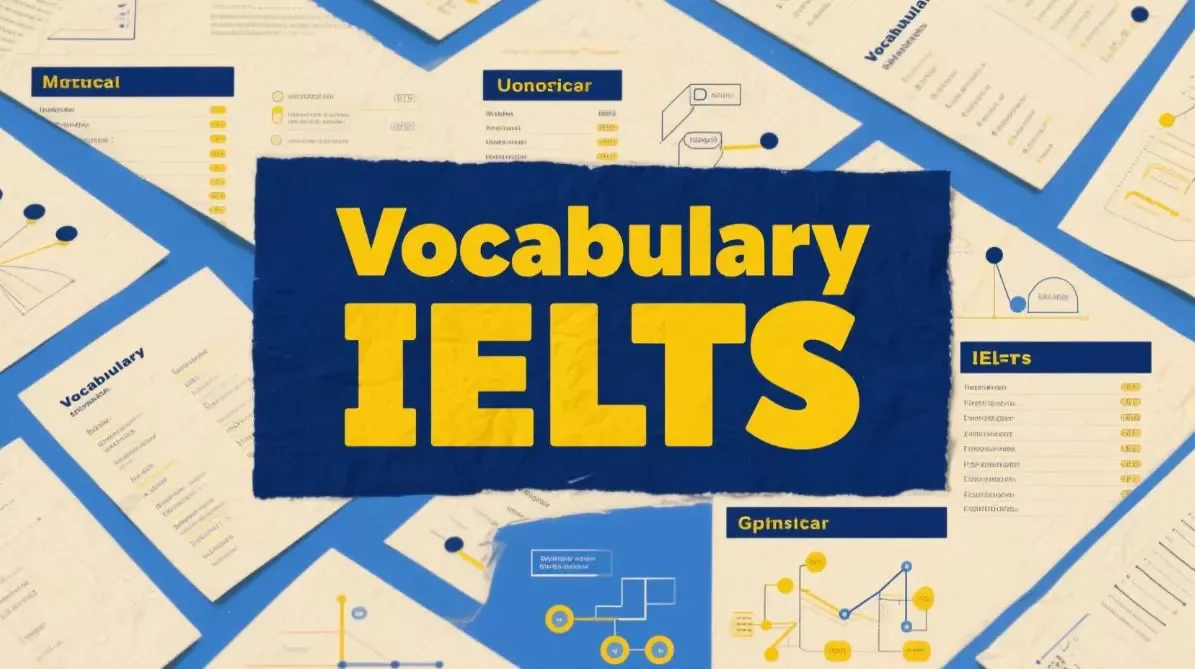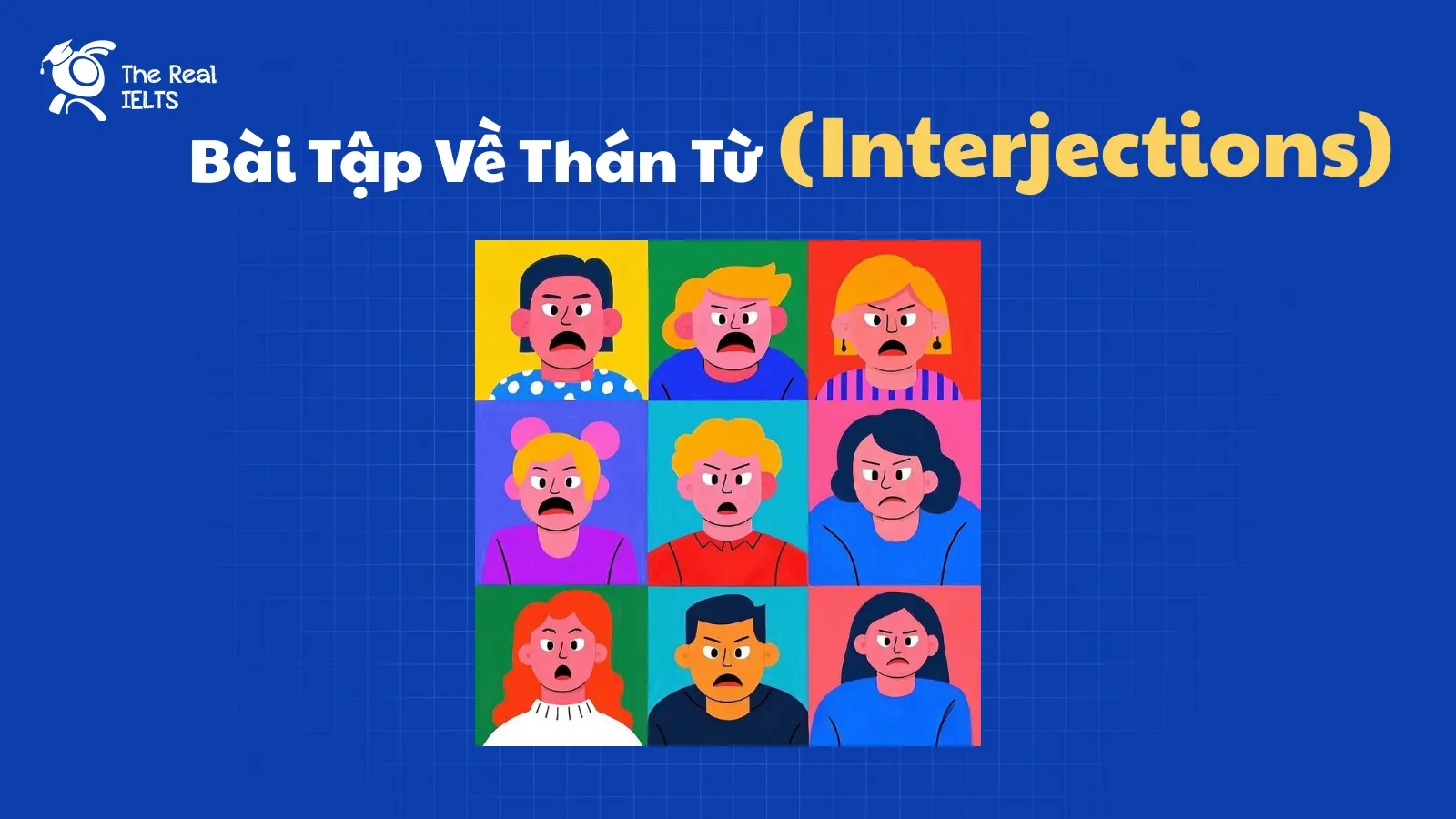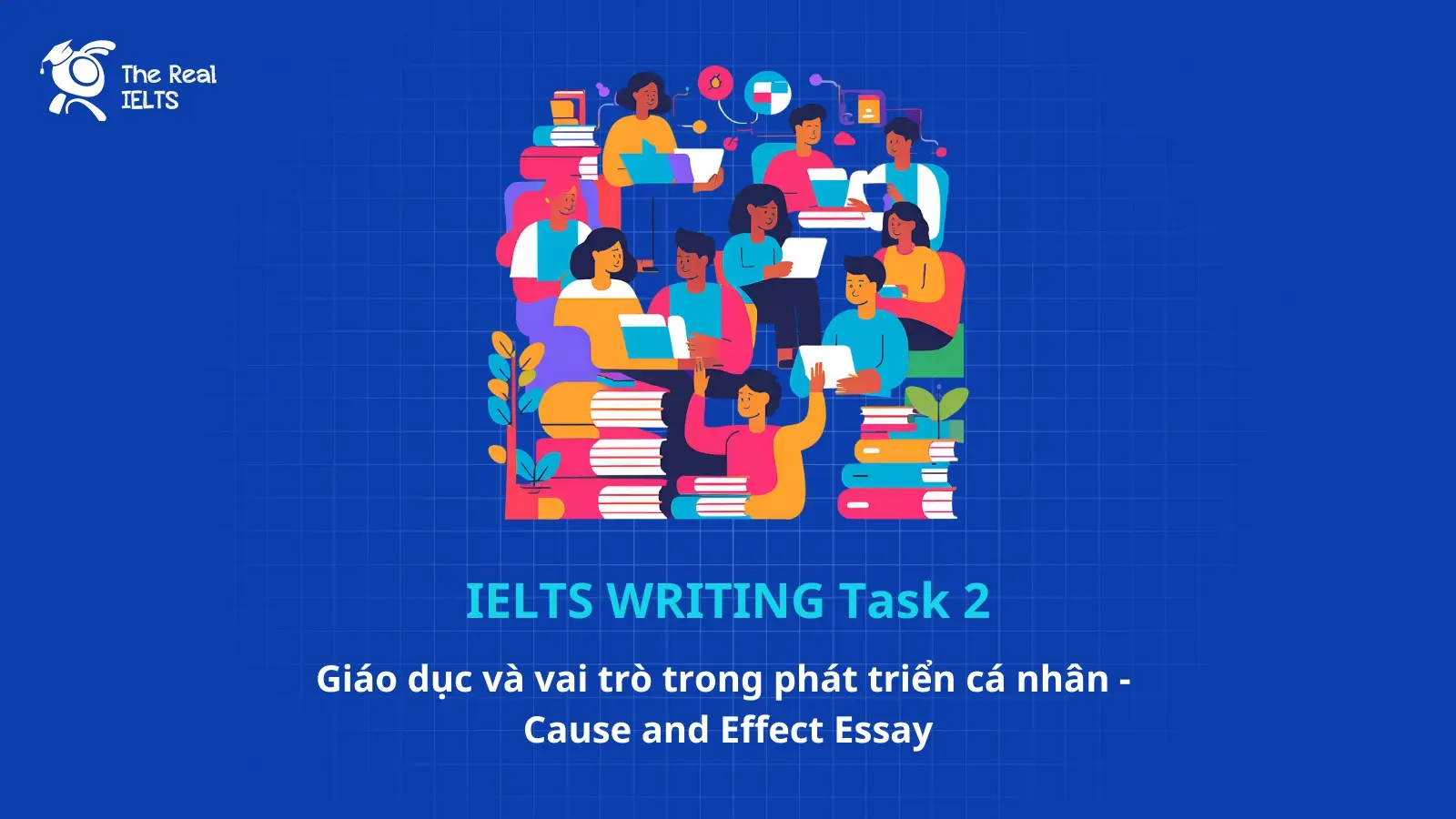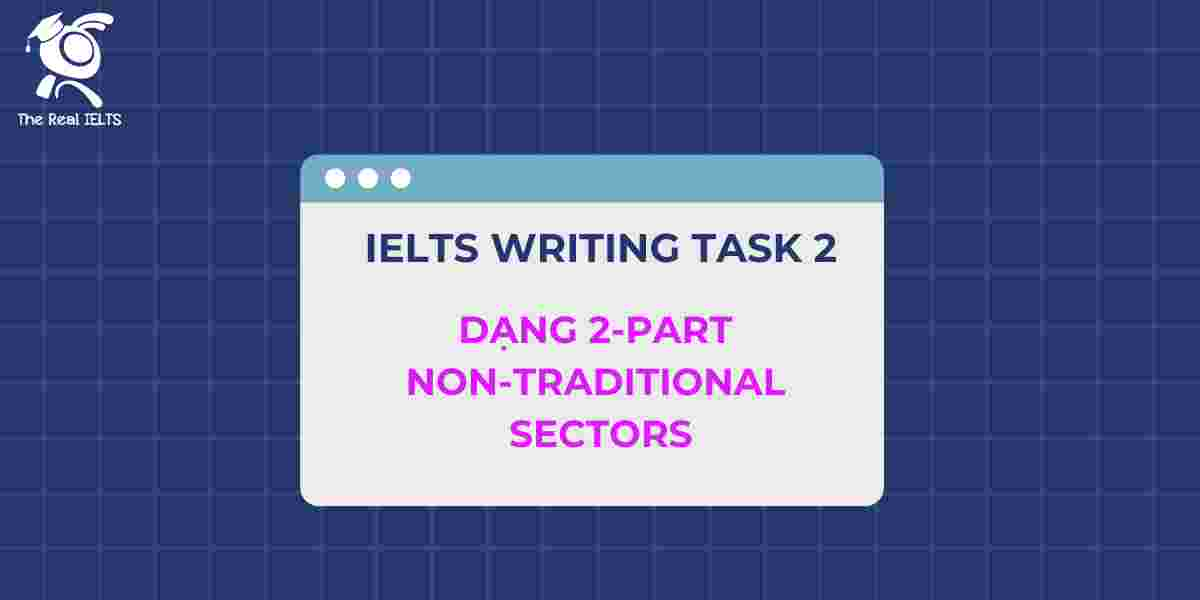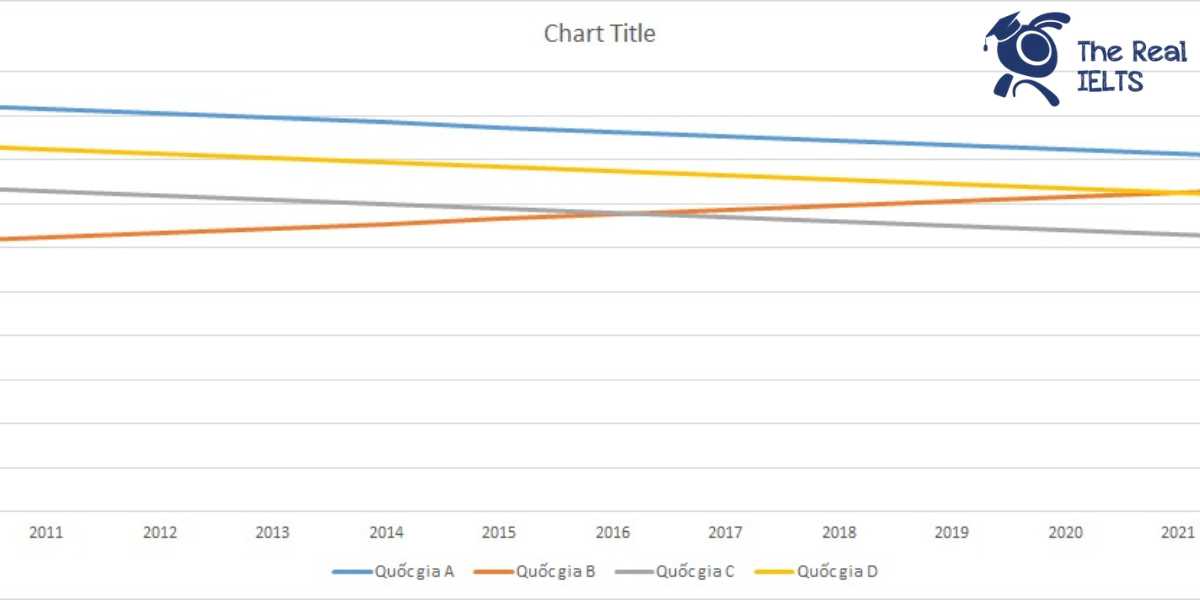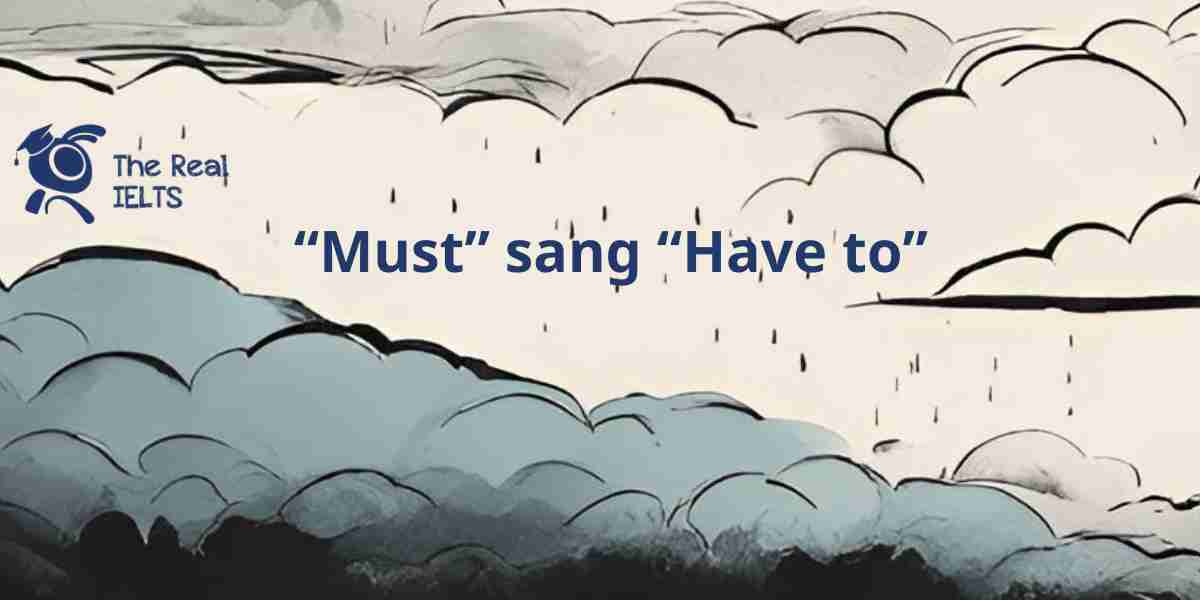Để đạt band cao trong kỳ thi IELTS, kỹ năng viết luôn là thách thức lớn với nhiều thí sinh, đặc biệt ở IELTS Writing Task 2 Phần 58, nơi yêu cầu tư duy logic và vốn từ phong phú. Phần thi này đòi hỏi khả năng trình bày lập luận rõ ràng, sử dụng ngữ pháp đa dạng và đáp ứng tiêu chí chấm điểm khắt khe. Việc luyện tập có chiến lược, kết hợp phản hồi chuyên sâu, sẽ giúp người học tối ưu hóa điểm số và tự tin chinh phục mục tiêu.
Đọc thêm: IELTS Writing Task 2 Phần 57
Đề 1 IELTS Writing Task 2
In many countries, the gap between the rich and the poor is increasing. What are the causes of this problem, and what solutions can be proposed to reduce this gap?
Bài essay (Band 6.5)
In recent years, the difference in wealth between the rich and the poor has become wider in many countries. This essay will discuss the main causes of this issue and suggest some practical solutions to address it.
One major cause of the growing gap is unequal access to education. Wealthy families can afford high-quality schools and private tutors, which help their children secure well-paid jobs. In contrast, poorer families often struggle to provide basic education, limiting their children’s opportunities. Another reason is globalization, which has created high-paying jobs for skilled workers but left low-skilled workers with low wages. For example, technology companies offer large salaries to engineers, while factory workers earn much less.
To reduce this gap, governments should focus on improving education systems. By investing in public schools, they can ensure that all children, regardless of their background, have access to quality education. Additionally, implementing progressive tax systems can help redistribute wealth. For instance, higher taxes on the rich can fund social programs for the poor, such as healthcare or job training. Finally, promoting fair wages for low-skilled workers can also narrow the gap.
In conclusion, the increasing wealth gap is caused by unequal education and the effects of globalization. However, by enhancing educational opportunities and introducing fairer tax policies, governments can take steps to reduce this problem. These measures require effort but are essential for a more equal society.
Chấm điểm (4 tiêu chí)
Task Response: 6.5
The essay addresses the task by identifying two causes (unequal education and globalization) and proposing relevant solutions (improving education and progressive taxes). However, the ideas are developed with limited depth, and examples are somewhat general (e.g., “technology companies”). To reach Band 7, more specific examples and deeper analysis are needed.
Coherence and Cohesion: 6.5
The essay is logically organized with a clear introduction, body paragraphs, and conclusion. Linking words like “for example” and “additionally” are used, but transitions between ideas are sometimes mechanical. To improve, vary cohesive devices and ensure smoother idea progression.
Lexical Resource: 6.5
The vocabulary is appropriate, with some academic phrases like unequal access and progressive tax systems. However, word choice is occasionally repetitive (e.g., “gap” used multiple times), and more precise or varied vocabulary could enhance the score.
Grammatical Range and Accuracy: 6.5
The essay uses a mix of simple and complex sentences, such as relative clauses and conditional structures. Minor errors, like “left low-skilled workers with low wages” (awkward phrasing), do not impede understanding but prevent a higher score. Greater accuracy and variety in complex structures are needed for Band 7.
Phân tích từ vựng
- Unequal access
- Nghĩa tiếng Việt: Sự tiếp cận không bình đẳng.
- Giải thích: Cụm từ này thường dùng trong văn học thuật để chỉ sự thiếu công bằng trong việc tiếp cận các nguồn lực như giáo dục, y tế. Trong bài, nó được dùng để mô tả nguyên nhân của chênh lệch giàu nghèo.
- Ví dụ: “Unequal access to healthcare increases social inequality.”
- Globalization
- Nghĩa tiếng Việt: Toàn cầu hóa.
- Giải thích: Từ này phổ biến trong các bài IELTS về kinh tế hoặc xã hội, chỉ sự kết nối toàn cầu về kinh tế, văn hóa. Trong bài, nó được dùng để giải thích sự gia tăng chênh lệch thu nhập.
- Ví dụ: “Globalization has widened the income gap in many nations.”
- Investing in public schools
- Nghĩa tiếng Việt: Đầu tư vào trường công.
- Giải thích: Cụm từ này mang tính học thuật, thường dùng khi đề xuất giải pháp cải thiện giáo dục. Trong bài, nó nhấn mạnh vai trò của chính phủ.
- Ví dụ: “Investing in public schools can reduce educational disparities.”
- Progressive tax systems
- Nghĩa tiếng Việt: Hệ thống thuế lũy tiến.
- Giải thích: Một cụm từ chuyên ngành kinh tế, chỉ hệ thống thuế mà người giàu trả tỷ lệ thuế cao hơn. Trong bài, nó được dùng để đề xuất giải pháp giảm bất bình đẳng.
- Ví dụ: “Progressive tax systems help fund welfare programs.”
- Enhancing educational opportunities
- Nghĩa tiếng Việt: Tăng cường cơ hội giáo dục.
- Giải thích: Cụm từ này phù hợp với văn học thuật, nhấn mạnh việc cải thiện khả năng tiếp cận giáo dục. Trong bài, nó xuất hiện ở phần kết luận để tóm tắt giải pháp.
- Ví dụ: “Enhancing educational opportunities is key to social mobility.”
Phân tích ngữ pháp
- Relative clauses
- Giải thích tiếng Việt: Mệnh đề quan hệ (e.g., “which has created high-paying jobs”) được dùng để bổ sung thông tin cho danh từ. Trong bài, cấu trúc này được dùng đúng nhưng hơi đơn giản và lặp lại. Để đạt Band 7, cần dùng các mệnh đề quan hệ phức tạp hơn, như mệnh đề rút gọn (reduced relative clauses).
- Ví dụ sai tiềm tàng: “Wealthy families can afford schools which are expensive” (có thể rút gọn thành “Wealthy families can afford expensive schools”).
- Conditional structures
- Giải thích tiếng Việt: Câu điều kiện (e.g., “By investing in public schools, they can ensure…”) được dùng để trình bày giải pháp. Cấu trúc này đúng nhưng thiếu sự đa dạng (chỉ dùng loại 1). Để cải thiện, nên dùng câu điều kiện loại 2 hoặc 3 để thể hiện giả định.
- Ví dụ cải thiện: “If governments invested more in education, the gap would narrow.”
- Passive voice
- Giải thích tiếng Việt: Thể bị động (e.g., “can be ensured”) được dùng để nhấn mạnh hành động hơn chủ thể. Trong bài, thể bị động được dùng đúng nhưng không đa dạng. Một lỗi tiềm tàng là lạm dụng bị động khiến câu kém tự nhiên.
- Ví dụ sai tiềm tàng: “The gap is caused by globalization” (có thể thay bằng “Globalization causes the gap” cho tự nhiên hơn).
Tổng kết & gợi ý cải thiện
Tổng kết: Bài viết đạt Band 6.5 nhờ cấu trúc rõ ràng, từ vựng phù hợp, và ngữ pháp tương đối chính xác. Tuy nhiên, lập luận chưa đủ sâu, ví dụ còn chung chung, và một số lỗi ngữ pháp nhỏ (như cách diễn đạt vụng về) ngăn bài đạt Band 7. Từ vựng tuy học thuật nhưng thiếu sự đa dạng và chính xác cao.
Gợi ý cải thiện:
- Sâu sắc hơn trong lập luận: Thêm ví dụ cụ thể (e.g., tên quốc gia hoặc số liệu giả định) và phân tích chi tiết hơn về nguyên nhân/hậu quả.
- Đa dạng từ vựng: Thay thế từ lặp như “gap” bằng từ đồng nghĩa (e.g., “disparity”, “inequality”) và dùng collocations mạnh hơn.
- Cải thiện ngữ pháp: Sử dụng cấu trúc phức tạp hơn (e.g., mệnh đề quan hệ rút gọn, câu điều kiện loại 2) và kiểm tra lỗi nhỏ trong cách diễn đạt.
- Liên kết mượt mà: Dùng các từ nối linh hoạt hơn (e.g., “consequently”, “in light of”) để tăng tính mạch lạc.
Đề 2 IELTS Writing Task 2
Some people believe that governments should invest more in public transportation to reduce traffic congestion and pollution. Others argue that building more roads is a better solution. Discuss both views and give your own opinion.
Bài essay (Band 6.5)
Traffic congestion and pollution are growing problems in many cities. Some people suggest that governments should focus on improving public transportation, while others believe that constructing more roads is more effective. This essay will discuss both perspectives and provide my own view.
On the one hand, supporters of public transportation argue that it can significantly reduce traffic and pollution. By investing in buses, trains, and subways, governments can encourage people to leave their cars at home. For example, cities like Tokyo have efficient subway systems, which help millions of people travel daily without causing heavy traffic. Moreover, public transport is more environmentally friendly because it reduces the number of vehicles on the road, leading to lower carbon emissions. This approach seems sustainable for the long term.
On the other hand, some believe that building more roads is a better solution. They argue that wider roads and new highways can accommodate more vehicles, reducing traffic jams. For instance, in some developing countries, new road projects have temporarily eased congestion in urban areas. However, this solution may not be effective in the long run, as more roads could encourage more people to buy cars, worsening pollution.
In my opinion, improving public transportation is the better option. It not only addresses congestion but also promotes a cleaner environment. Governments should prioritize affordable and reliable transport systems to benefit both citizens and the planet.
In conclusion, while building roads may provide short-term relief, investing in public transportation is a more sustainable solution to tackle traffic congestion and pollution.
Chấm điểm (4 tiêu chí)
Task Response: 6.5
The essay addresses both views and provides a clear opinion, meeting the task requirements. However, the arguments lack depth, with limited development of ideas (e.g., the example of Tokyo is brief). To reach Band 7, more specific evidence and elaboration are needed.
Coherence and Cohesion: 6.5
The essay is logically organized with clear paragraphing. Linking words like “moreover” and “however” are used appropriately, but transitions between ideas could be smoother. Some repetition of ideas (e.g., congestion and pollution) limits cohesion. Band 7 requires more varied cohesive devices.
Lexical Resource: 6.5
The vocabulary is adequate, with some academic words like “sustainable” and “carbon emissions.” However, word choice is sometimes repetitive (e.g., “reduce” used multiple times), and there is limited use of higher-level vocabulary. Band 7 needs more precise and varied lexical items.
Grammatical Range and Accuracy: 6.5
The essay uses a mix of simple and complex sentences, with generally accurate grammar. Minor errors (e.g., “causing heavy traffic” could be clearer) do not impede understanding. Band 7 requires more complex structures and fewer minor errors.
Phân tích từ vựng
- public transportation
- Nghĩa tiếng Việt: Giao thông công cộng
- Giải thích: Cụm từ này được dùng để chỉ các phương tiện như xe buýt, tàu hỏa, tàu điện ngầm phục vụ công chúng. Trong bài, nó được dùng để thảo luận về giải pháp giảm ùn tắc giao thông và ô nhiễm, phù hợp với ngữ cảnh học thuật.
- traffic congestion
- Nghĩa tiếng Việt: Ùn tắc giao thông
- Giải thích: Cụm từ phổ biến trong bài viết về giao thông, thể hiện tình trạng kẹt xe. Nó được dùng lặp lại trong bài, nhưng cần thay thế bằng từ đồng nghĩa (e.g., “traffic jams”) để tránh lặp từ.
- carbon emissions
- Nghĩa tiếng Việt: Khí thải carbon
- Giải thích: Thuật ngữ học thuật dùng trong các bài viết về môi trường, ám chỉ khí thải gây hiệu ứng nhà kính. Trong bài, cụm này được dùng đúng ngữ cảnh nhưng cần thêm từ đồng nghĩa để tăng tính đa dạng.
- sustainable
- Nghĩa tiếng Việt: Bền vững
- Giải thích: Từ này thường xuất hiện trong các bài viết về môi trường hoặc phát triển dài hạn. Trong bài, “sustainable” được dùng để nhấn mạnh lợi ích của giao thông công cộng, nhưng cần thêm ví dụ cụ thể để tăng tính thuyết phục.
- accommodate
- Nghĩa tiếng Việt: Đáp ứng, chứa đựng
- Giải thích: Động từ này mang tính học thuật, được dùng để nói về khả năng của đường sá trong việc chứa nhiều xe hơn. Tuy nhiên, bài viết có thể dùng thêm các từ như “facilitate” để tăng sự phong phú.
Phân tích ngữ pháp
- By investing in buses, trains, and subways
- Giải thích tiếng Việt: Cấu trúc “By + V-ing” được dùng đúng để chỉ phương pháp hoặc cách thức đạt được mục tiêu (ở đây là giảm ùn tắc). Cấu trúc này phổ biến trong văn học thuật, nhưng bài viết chỉ dùng một lần, hạn chế sự đa dạng.
- which help millions of people travel daily
- Giải thích tiếng Việt: Mệnh đề quan hệ “which” được dùng đúng để bổ sung thông tin về hệ thống tàu điện ngầm. Tuy nhiên, bài viết có thể dùng thêm các mệnh đề quan hệ khác (e.g., “that,” “who”) để tăng độ phong phú.
- new road projects have temporarily eased congestion
- Giải thích tiếng Việt: Câu sử dụng thì hiện tại hoàn thành (“have eased”) đúng ngữ pháp để nói về kết quả của hành động trong quá khứ vẫn còn ảnh hưởng. Tuy nhiên, từ “temporarily” đặt ở vị trí hơi vụng, có thể thay bằng “have provided temporary relief” để tự nhiên hơn.
- causing heavy traffic
- Giải thích tiếng Việt: Cụm phân từ hiện tại “causing” được dùng để diễn tả kết quả, nhưng cụm này hơi đơn giản và không rõ ràng. Thay bằng mệnh đề quan hệ (e.g., “which causes heavy traffic”) sẽ tăng tính học thuật và chính xác.
Tổng kết & gợi ý cải thiện
The essay achieves a Band 6.5 due to its clear structure, relevant arguments, and adequate use of vocabulary and grammar. However, it falls short of Band 7 because of limited idea development, repetitive vocabulary, and minor grammatical inaccuracies. To improve to Band 7:
- Task Response: Provide more detailed examples and explanations (e.g., specific policies or data about public transport).
- Coherence and Cohesion: Use a wider range of linking devices (e.g., “in contrast,” “consequently”) and avoid repeating key terms.
- Lexical Resource: Incorporate synonyms (e.g., “alleviate” for “reduce”) and higher-level vocabulary.
- Grammatical Range: Use more complex structures like conditional sentences or passive voice accurately.
(Note: Some feedback is estimated, as human examiners may interpret minor errors differently.)
Đề 3 IELTS Writing Task 2
Some people believe that modern technology has made communication between people easier and more effective, while others think it has caused misunderstandings and weakened relationships. Discuss both views and give your own opinion.
Bài essay (Band 6.5)
In today’s world, technological advancements have transformed how people communicate. Some argue that technology makes communication more convenient and efficient, while others believe it leads to misunderstandings and harms relationships. This essay will discuss both perspectives before presenting my own view.
On the one hand, modern technology has facilitated communication significantly. Devices like smartphones and applications such as WhatsApp allow people to connect instantly, regardless of distance. For example, video calls enable families living abroad to stay in touch regularly, which was impossible in the past. Moreover, emails and messaging platforms help professionals exchange information quickly, enhancing productivity. These tools make communication more accessible and save time.
On the other hand, technology can create barriers to effective communication. Text-based messaging often lacks tone and facial expressions, which may cause misinterpretations. For instance, a simple message might be seen as rude without the sender’s intention. Additionally, excessive reliance on technology reduces face-to-face interactions, weakening personal bonds. Many young people prefer texting over meeting in person, which can undermine relationships over time.
In my opinion, while technology offers great convenience, it cannot fully replace traditional communication. The lack of emotional cues in digital interactions often leads to misunderstandings, but this can be mitigated by balancing online and offline communication. Therefore, technology should be used wisely to complement rather than dominate our interactions.
In conclusion, technology has both improved and complicated communication. By using it carefully, we can enjoy its benefits while maintaining strong relationships.
Chấm điểm (4 tiêu chí)
Task Response: 6.5
The essay addresses both views and provides a clear opinion, with relevant examples. However, the arguments lack depth, and some points (e.g., “weakening personal bonds”) are not fully developed, limiting the score to 6.5.
Coherence and Cohesion: 6.5
The essay is logically organized with clear paragraphing and basic linking words (e.g., “On the one hand,” “Moreover”). However, transitions between ideas could be smoother, and some sentences feel repetitive, preventing a higher score.
Lexical Resource: 6.5
The vocabulary is appropriate with some academic phrases (e.g., facilitated communication, enhancing productivity), but there is limited variety, and simpler words dominate. No major errors, but more range would improve the score.
Grammatical Range and Accuracy: 6.5
The essay uses a mix of simple and complex sentences with mostly accurate grammar. Minor errors (e.g., article misuse, verb tense inconsistency) do not impede meaning but prevent a Band 7.
Phân tích từ vựng
- Technological advancements
- Nghĩa: Sự tiến bộ công nghệ
- Giải thích: Cụm từ học thuật dùng để chỉ sự phát triển của công nghệ. Thường xuất hiện trong bài viết về tác động của công nghệ. Trong bài, cụm này mở đầu phần giới thiệu, tạo ấn tượng học thuật.
- Facilitated communication
- Nghĩa: Tạo điều kiện cho giao tiếp
- Giải thích: Cụm động từ mang tính trang trọng, phù hợp khi thảo luận về cách công nghệ hỗ trợ liên kết con người. Dùng trong Body 1 để nhấn mạnh lợi ích.
- Enhancing productivity
- Nghĩa: Tăng cường năng suất
- Giải thích: Cụm này biểu thị việc cải thiện hiệu quả công việc, thường dùng trong ngữ cảnh chuyên môn. Trong bài, nó củng cố ý về lợi ích của công nghệ.
- Barriers to effective communication
- Nghĩa: Rào cản đối với giao tiếp hiệu quả
- Giải thích: Cụm danh từ học thuật, dùng để chỉ những trở ngại trong giao tiếp. Trong Body 2, cụm này giới thiệu nhược điểm của công nghệ.
- Undermine relationships
- Nghĩa: Làm suy yếu các mối quan hệ
- Giải thích: Động từ “undermine” mang sắc thái tiêu cực, phù hợp khi nói về tác động xấu. Dùng trong Body 2 để nhấn mạnh hậu quả của việc ít gặp trực tiếp.
- Misinterpretations
- Nghĩa: Sự hiểu lầm
- Giải thích: Danh từ học thuật, chỉ sự hiểu sai ý nghĩa. Trong bài, cụm này làm rõ vấn đề của giao tiếp qua tin nhắn.
Phân tích ngữ pháp
- Complex sentences with “which”
- Giải thích: Câu phức với mệnh đề quan hệ “which” được dùng đúng trong bài (e.g., “which was impossible in the past”). Cấu trúc này tăng tính học thuật, nhưng bài chỉ dùng một lần, thiếu sự đa dạng.
- Article misuse
- Giải thích: Có lỗi nhỏ về mạo từ, ví dụ “a simple message might be seen as rude” nên là “the simple message” vì ám chỉ cụ thể. Lỗi này phổ biến ở Band 6.5, làm giảm độ chính xác.
- Modal verbs for possibility
- Giải thích: Bài sử dụng “may cause” và “might be seen” để diễn đạt khả năng, phù hợp với ngữ cảnh học thuật. Tuy nhiên, lặp lại “might” cho thấy hạn chế về sự đa dạng.
- Verb tense consistency
- Giải thích: Bài có một lỗi nhỏ về thì, ví dụ “reduces face-to-face interactions” (hiện tại) nhưng ngữ cảnh nói về xu hướng dài hạn, nên dùng “has reduced” (hiện tại hoàn thành). Lỗi này không nghiêm trọng nhưng ảnh hưởng đến Band 7.
Tổng kết & gợi ý cải thiện
The essay achieves a solid Band 6.5, with clear arguments and appropriate language but lacks depth and variety to reach Band 7. The structure is logical, but ideas are developed superficially, and minor grammatical errors persist.
Gợi ý cải thiện:
- Task Response: Develop arguments with more specific examples or consequences (e.g., explain how misunderstandings affect workplace dynamics).
- Coherence: Use varied linking devices (e.g., “In contrast,” “As a result”) to improve flow.
- Lexical Resource: Incorporate synonyms or collocations (e.g., replace “convenient” with “streamlined”).
- Grammar: Practice complex structures like conditional sentences (“If people balanced…”) and ensure consistent verb tenses.
Đề 4 IELTS Writing Task 2
Some people believe that governments should invest more in public transportation to reduce traffic congestion and pollution. Others argue that improving road infrastructure for private vehicles is more effective. Discuss both views and give your own opinion.
Bài essay (Band 6.5)
In many cities, traffic congestion and pollution are serious problems. Some argue that governments should prioritize public transportation, while others believe that expanding road infrastructure for private vehicles is better. This essay will discuss both perspectives and present my opinion.
On the one hand, investing in public transportation can significantly reduce traffic and pollution. Efficient systems like buses and trains can carry many passengers at once, decreasing the number of private cars on the road. For example, cities with reliable subway systems, such as Tokyo, experience less congestion. Moreover, public transport is often powered by electricity, which produces fewer emissions than petrol-based vehicles. Therefore, this approach addresses both congestion and environmental concerns effectively.
On the other hand, improving road infrastructure is favored by those who value convenience. Wider roads and better traffic management can reduce travel time for private vehicles, which many people prefer for flexibility. For instance, new highways in some countries have eased traffic flow in urban areas. However, this solution may not be sustainable, as it encourages more car use, leading to higher pollution levels in the long term.
In my opinion, public transportation is the better option. It tackles both congestion and pollution more sustainably than road expansion, which only offers short-term relief. Governments should focus on affordable and accessible transport systems to encourage their use.
In conclusion, while improving roads benefits private vehicle users, public transportation is a more effective solution for reducing traffic and pollution. Governments should prioritize sustainable policies to address these issues.
Chấm điểm (4 tiêu chí)
Task Response: 6.5
The essay addresses both views and provides a clear opinion, with relevant examples (e.g., Tokyo’s subway). However, the discussion lacks depth in analyzing long-term impacts or counterarguments, which limits it to Band 6.5.
Coherence and Cohesion: 6.5
The essay is logically organized with clear paragraphing and linking words (e.g., “On the one hand,” “Moreover”). However, transitions between ideas are sometimes basic, and cohesion could be improved with more varied connectors.
Lexical Resource: 6.5
The vocabulary is appropriate, with some academic phrases (e.g., significantly reduce, sustainable policies). However, word choice is occasionally repetitive, and more precise or varied terms could enhance the score.
Grammatical Range and Accuracy: 6.5
The essay uses a mix of simple and complex sentences, with mostly accurate grammar. Minor errors (e.g., is often powered) and limited use of advanced structures prevent a higher score.
Phân tích từ vựng
- significantly reduce
- Nghĩa tiếng Việt: Giảm đáng kể
- Giải thích: Cụm từ này dùng để nhấn mạnh mức độ tác động lớn trong ngữ cảnh học thuật, thường xuất hiện khi thảo luận về hiệu quả của một giải pháp. Ví dụ: “Public transport can significantly reduce pollution.”
- Ngữ cảnh: Thích hợp cho các bài viết về giải pháp hoặc tác động tích cực.
- traffic congestion
- Nghĩa tiếng Việt: Ùn tắc giao thông
- Giải thích: Một cụm từ phổ biến trong các bài IELTS về giao thông, dùng để mô tả tình trạng tắc nghẽn ở đô thị. Ví dụ: “Traffic congestion is a major issue in big cities.”
- Ngữ cảnh: Dùng trong các bài Problem-Solution hoặc Discussion.
- sustainable policies
- Nghĩa tiếng Việt: Chính sách bền vững
- Giải thích: Cụm từ học thuật, thường dùng để nói về các giải pháp lâu dài, thân thiện với môi trường. Ví dụ: “Governments should adopt sustainable policies.”
- Ngữ cảnh: Phù hợp khi thảo luận về môi trường hoặc phát triển.
- reliable subway systems
- Nghĩa tiếng Việt: Hệ thống tàu điện ngầm đáng tin cậy
- Giải thích: Cụm từ này mô tả cơ sở hạ tầng giao thông chất lượng cao, thường dùng để đưa ví dụ cụ thể. Ví dụ: “Reliable subway systems reduce commuting time.”
- Ngữ cảnh: Dùng khi đề cập đến lợi ích của giao thông công cộng.
- short-term relief
- Nghĩa tiếng Việt: Giải pháp tạm thời
- Giải thích: Dùng để chỉ các giải pháp mang lại hiệu quả ngay lập tức nhưng không bền vững. Ví dụ: “Road expansion offers short-term relief.”
- Ngữ cảnh: Thích hợp khi so sánh các giải pháp.
Phân tích ngữ pháp
- is often powered
- Giải thích tiếng Việt: Câu này đúng ngữ pháp nhưng thiếu sự đa dạng. Thay vì dùng bị động đơn giản, có thể dùng cấu trúc phức tạp hơn như “is increasingly being powered” để tăng tính học thuật. Lỗi này không nghiêm trọng nhưng giới hạn điểm ở Band 6.5.
- Ví dụ cải thiện: “Public transport is increasingly being powered by renewable energy.”
- which many people prefer for flexibility
- Giải thích tiếng Việt: Mệnh đề quan hệ này đúng nhưng hơi cơ bản. Để đạt Band 7, có thể dùng cấu trúc phức tạp hơn, như mệnh đề rút gọn: “preferred by many for its flexibility.”
- Ví dụ cải thiện: “Private vehicles, preferred by many for their flexibility, dominate urban areas.”
- leading to higher pollution levels
- Giải thích tiếng Việt: Cụm phân từ hiện tại được dùng đúng, thể hiện mối quan hệ nhân quả. Đây là điểm mạnh, nhưng bài viết cần thêm các cấu trúc tương tự để tăng độ đa dạng.
- Ví dụ bổ sung: “Encouraging car use, this approach worsens air quality.”
Tổng kết & gợi ý cải thiện
Tổng kết: Bài essay đạt Band 6.5 nhờ cấu trúc rõ ràng, từ vựng phù hợp, và lập luận cơ bản. Tuy nhiên, nó thiếu sự phân tích sâu, từ vựng đa dạng, và cấu trúc ngữ pháp phức tạp hơn để đạt Band 7. Các lỗi nhỏ về ngữ pháp và tính lặp từ vựng cũng góp phần giới hạn điểm số.
Gợi ý cải thiện:
- Task Response: Thêm phân tích sâu hơn, ví dụ: thảo luận về chi phí của giao thông công cộng hoặc tác động kinh tế của mở rộng đường.
- Coherence: Sử dụng các từ nối phức tạp hơn (e.g., “In contrast,” “Consequently”) để tăng tính mạch lạc.
- Lexical Resource: Thay thế các từ lặp bằng từ đồng nghĩa (e.g., thay “reduce” bằng “mitigate” hoặc “alleviate”).
- Grammar: Tăng cường sử dụng mệnh đề rút gọn, câu điều kiện, hoặc bị động phức tạp để thể hiện sự đa dạng.



